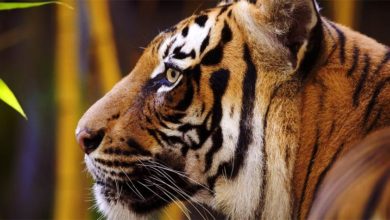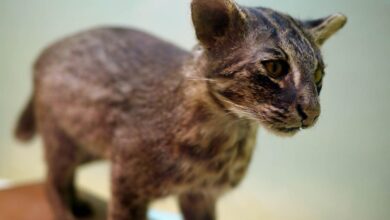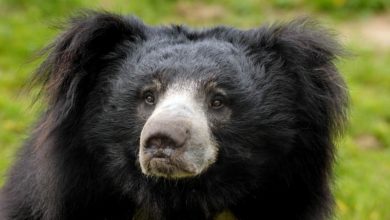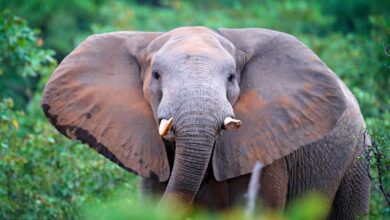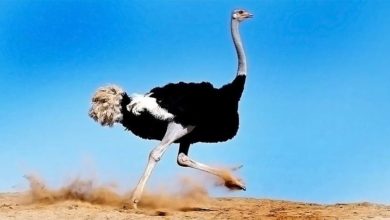The Unique Biology of Owls: How They See, Hear, and Hunt in the Dark
As night falls and the world grows dark, a silent hunter takes to the skies, its feathers shimmering like moonlight. With razor-sharp talons and keen eyesight, the owl is a creature of myth and mystery, inspiring awe and wonder in all who cross its path. Whether seen as a symbol of wisdom, a harbinger of death, or a beloved companion of wizards and witches, the owl has captivated human imagination for centuries. So join me, dear reader, as we delve into the world of these magnificent creatures and unravel the secrets of the enigmatic owl.
Owls are a group of birds of prey that are known for their distinctive appearance and unique behavior. These birds have a large, rounded head with forward-facing eyes that are surrounded by a facial disc of feathers. This gives them excellent stereoscopic vision, which means they can perceive depth and distance with incredible accuracy. Owls also have incredibly sharp talons and a hooked beak that are perfectly adapted for catching and tearing apart their prey.
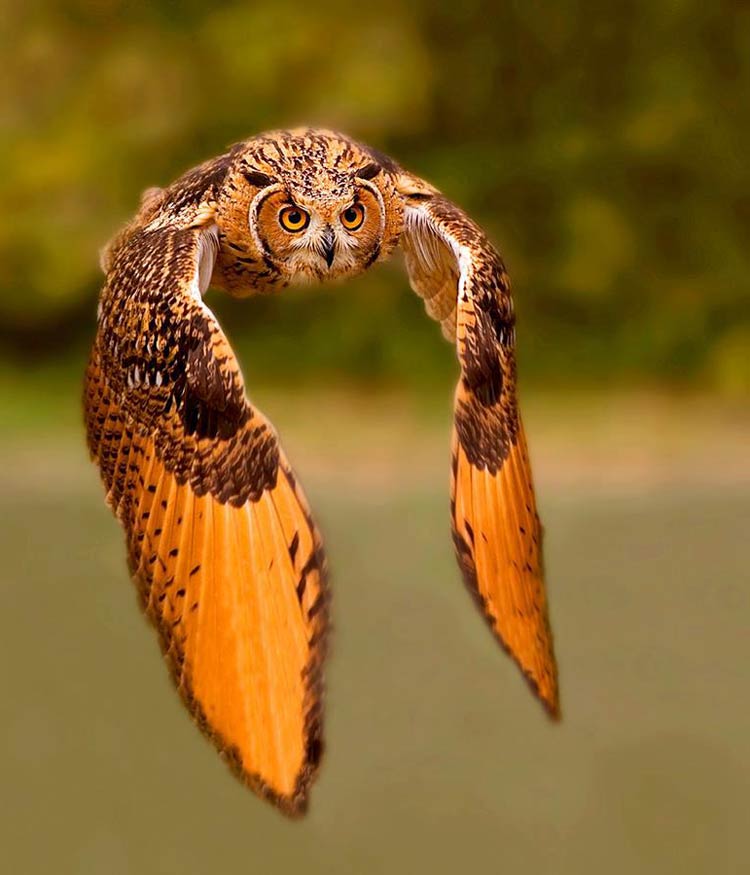
One of the most fascinating things about owls is their ability to fly silently through the night. Their feathers are specially adapted to muffle sound, which allows them to swoop down on unsuspecting prey without making a sound. Additionally, owls have incredibly sensitive hearing, which allows them to locate prey even in complete darkness.
Owls come in a wide range of sizes, from the tiny elf owl, which weighs just over an ounce, to the enormous Eurasian eagle-owl, which can weigh up to 9 pounds. Despite their size differences, all owls share a number of adaptations that make them perfectly suited to their nocturnal lifestyle. From their exceptional vision and hearing to their silent flight and deadly talons, these birds are true marvels of nature.
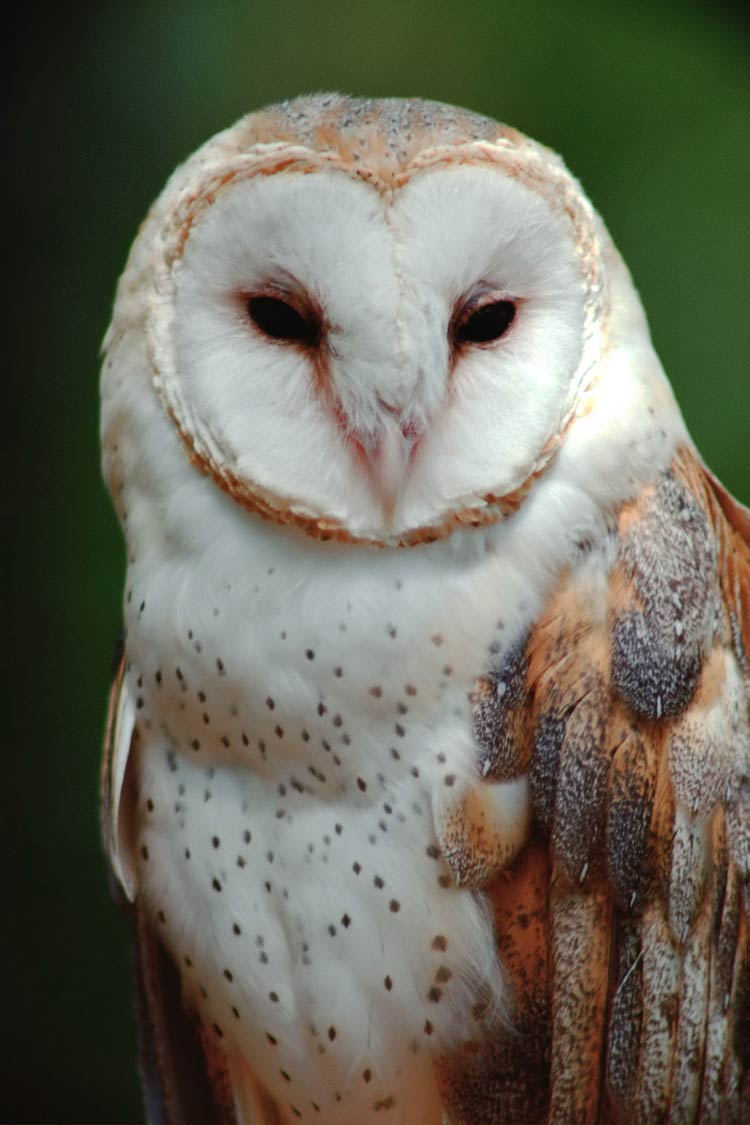
Taxonomy
Owls belong to the taxonomic order Strigiformes, which includes about 250 species of birds of prey. This order is divided into two families: the Tytonidae, which includes the barn owls, and the Strigidae, which includes all other owls.
The family Strigidae is further divided into two subfamilies: the true owls (Striginae) and the bay owls (Phodilinae). The true owls are the more familiar of the two and include species like the snowy owl, great horned owl, and screech owl. The bay owls, on the other hand, are less well-known and include species like the Oriental bay owl and the African wood owl.
Overall, the taxonomy of owls is complex and continues to be the subject of ongoing research as scientists work to refine our understanding of these fascinating birds.
Classification
- Kingdom: Animalia
- Phylum: Chordata
- Class: Aves
- Clade: Telluraves
- Order: Strigiformes
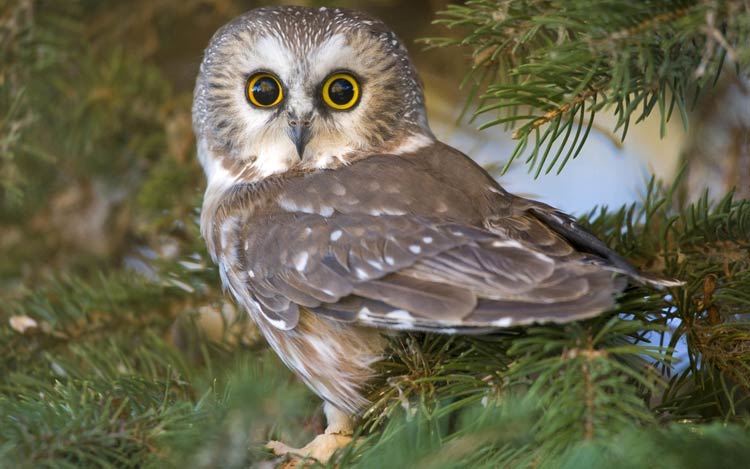
Basic Facts About Owls
- Owls are birds of prey that are found all over the world, except for Antarctica.
- There are around 250 species of owls, divided into two families: Tytonidae (barn owls) and Strigidae (all other owls).
- Owls are known for their distinctive appearance, which includes a large head, forward-facing eyes, and a facial disc of feathers.
- Most owls are nocturnal and hunt at night, but some species are crepuscular (active at dawn and dusk) or diurnal (active during the day).
- Owls have exceptional vision and hearing, which allows them to locate and capture prey in complete darkness.
- Their feathers are specially adapted to muffle sound, allowing them to fly silently through the night.
- Owls are carnivorous and feed on a variety of prey, including rodents, birds, fish, and insects.
- Some owl species are solitary, while others live in pairs or small groups.
- Owls are capable of turning their heads almost 270 degrees, which allows them to see in almost all directions without moving their bodies.
- Most owls are monogamous and mate for life.
- The smallest owl is the elf owl, which weighs just over an ounce, while the largest is the Eurasian eagle-owl, which can weigh up to 9 pounds.
- Owls have been featured in many cultures throughout history and are often associated with wisdom, magic, and mystery.
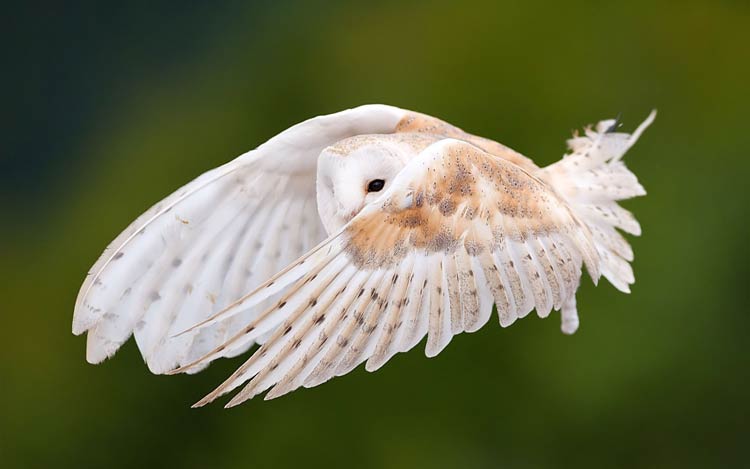
Distribution and habitat
Owls are found all over the world, except for Antarctica. They are a diverse group of birds that occupy a variety of habitats, from forests and grasslands to deserts and tundras.
Some species, like the snowy owl, are adapted to life in the Arctic and can be found in the northern parts of North America, Europe, and Asia. Other species, like the barn owl, are found in more temperate climates and can be found on every continent except for Antarctica.
Many owl species are found in forests, where they hunt for prey among the trees. Some species, like the burrowing owl, live in open grasslands or deserts and nest in burrows in the ground. Still, other species, like the fishing owl, are found near rivers and other bodies of water, where they hunt for fish and other aquatic prey.
The distribution and habitat of owls are highly varied and depend on the specific species in question. However, they are generally adaptable birds that can thrive in a wide range of environments.
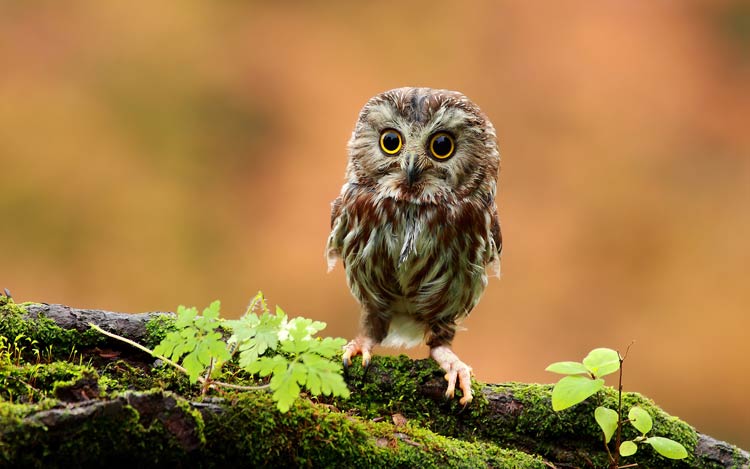
Characteristics
Appearance
Owls are known for their distinctive appearance, which includes several features that are well adapted for their hunting and survival strategies.
One of the most noticeable features of owls is their large, round head. Their eyes are large and forward-facing, providing them with excellent depth perception and binocular vision. Owls have a flattened facial disc of feathers that helps to funnel sound toward their ears, which are often located asymmetrically on their head. This adaptation allows them to pinpoint the location of prey, even in complete darkness.
Owls are also known for their soft, fluffy feathers, which are specially adapted for silent flight. Their wings are broad and rounded, allowing them to fly almost silently through the air. Their feathers are often patterned and colored for camouflage, helping them to blend in with their surroundings.
Owls come in a wide range of sizes, from the tiny elf owl, which is around 13.5 cm (5+1/4 in) long and weighs just 31 g (1+3/32 oz), to the massive Eurasian eagle-owl, which can be up to 71 cm (28 in) long, with a wingspan of 190 cm (75 in) and can weigh as much as 4.2 kg (9+1/4 lb).
The appearance of owls is highly adapted to their hunting and survival strategies, and their striking features make them some of the most recognizable and fascinating birds in the world.

Sexual dimorphism
Sexual dimorphism is present in many owl species, with males and females differing in size and/or appearance. In some species, the differences are quite striking.
For example, in the barn owl, males are typically smaller than females, with a body length of around 33-39 cm (13-15 in) for males and 35-44 cm (14-17 in) for females. Females also tend to have a darker and more extensive pattern of speckles on their feathers than males.
Similarly, in the great horned owl, females are generally larger and heavier than males. A female great horned owl can be up to 63 cm (25 in) long, with a wingspan of up to 152 cm (60 in), while males are usually around 56 cm (22 in) long, with a wingspan of up to 137 cm (54 in). Females also have a deeper voice than males.
In some owl species, such as the eastern screech owl, males and females are nearly identical in appearance, making it difficult to tell them apart without genetic testing.
Sexual dimorphism in owls can vary greatly between species, and even within species. However, it often reflects differences in the roles that males and females play in reproduction and parenting, with females typically being larger and heavier to support the demands of laying eggs and raising young.
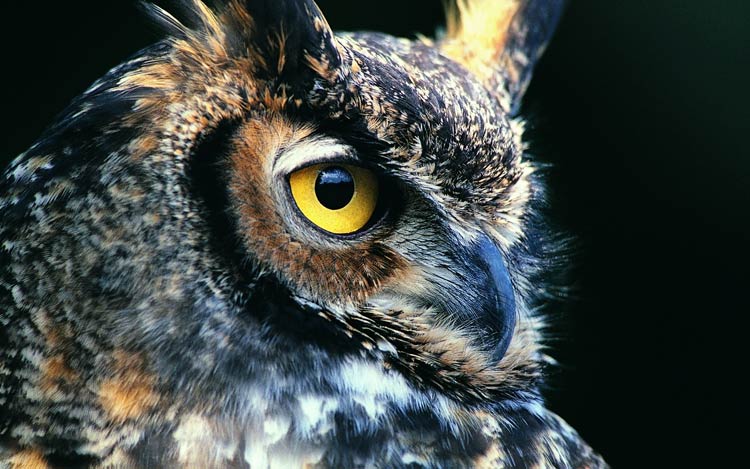
Behavior, Lifestyle and ecology
Owls are primarily nocturnal birds, with many species being active during the hours of darkness and resting during the day. They have a wide range of behaviors, lifestyles, and ecological roles, depending on their habitat and the species in question.
Most owl species are solitary, with pairs coming together only to mate and raise young. During breeding season, males will defend a territory and attract a female with displays of courtship behavior, such as calling and presenting food.
Owls are known for their remarkable hunting abilities, with many species having adaptations such as silent flight, specialized feathers, and keen senses to locate and catch prey. They are opportunistic hunters, and their diet varies depending on their habitat and the availability of prey. Some species primarily hunt rodents and other small mammals, while others specialize in birds, insects, or fish.
Some owl species are migratory, while others are resident in their habitat year-round. They may roost in a variety of locations, such as tree cavities, burrows, or abandoned buildings.
Owls are an important part of many ecosystems, with some species playing a key role in controlling populations of rodents and other small mammals. They are also often used as indicators of environmental health, with changes in owl populations reflecting changes in habitat quality and ecosystem function.
The behavior, lifestyle, and ecology of owls are highly varied and dependent on the specific species in question. However, they are fascinating and important birds that play a vital role in many ecosystems around the world.
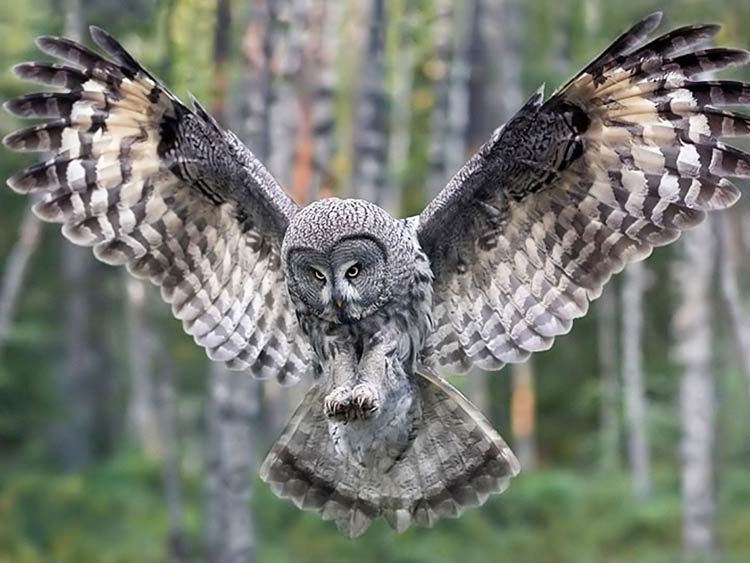
Diet
Owls are carnivorous birds and have a varied diet depending on their habitat and the species in question. They are opportunistic hunters, which means they will take advantage of any prey that is available to them.
The most common prey for many owl species are small mammals such as rodents, including voles, mice, rats, and shrews. Some larger owl species, such as the great horned owl, may also prey on larger mammals such as rabbits, skunks, and even domestic cats.
Other prey items for owls can include birds, insects, reptiles, and amphibians. Some owl species, such as the snowy owl, will also prey on fish and crustaceans in coastal or wetland habitats.
Owls use a variety of hunting techniques, including perching and waiting for prey to come within striking distance, flying low over open ground and pouncing on prey, and hunting from a perch or in flight. They have keen senses, including excellent hearing and vision, which help them locate and capture prey in low light conditions.
Overall, the diet of owls is diverse and dependent on the specific species and habitat. Owls play an important role in controlling populations of small mammals, which can have significant ecological impacts, and are valued by farmers and other land managers for their pest control services.
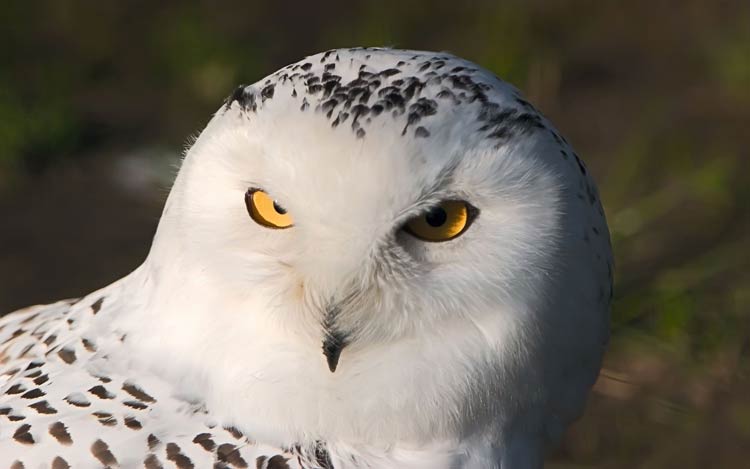
Hunting adaptations
Owls are highly adapted for hunting, with a range of physical and behavioral adaptations that make them some of the most efficient predators in the animal kingdom. Here are some of the key hunting adaptations of owls:
- Flight and feathers
Owls have specialized feathers that allow them to fly almost silently, allowing them to surprise their prey with little warning. Their wings are also adapted for low-speed flight and maneuverability, which allows them to navigate through dense forests and other habitats with ease. - Vision
Owls have large eyes that are adapted for low-light conditions, which enables them to hunt during the night and in other low-light situations. Their eyes are also highly sensitive to motion, which makes it easier for them to detect and track prey in flight. - Hearing
Many owl species have asymmetrical ear openings, which allows them to locate prey using sound alone. This adaptation, known as binaural hearing, enables owls to locate prey in complete darkness and helps them hunt in areas with dense vegetation where vision is limited. - Talons
Owls have powerful talons that are adapted for grasping and killing prey. Their talons are also reversible, which means they can rotate them to switch between grasping and perching. - Beak
The beak of an owl is sharp and curved, allowing them to tear apart prey and swallow it whole. - Camouflage
Many owl species have camouflage patterns on their feathers that help them blend in with their surroundings, making them harder for prey to detect. Some species also have tufts of feathers on their heads that help break up their outline and make them harder to see.
The combination of these hunting adaptations makes owls some of the most efficient and successful predators in the animal kingdom.

Reproduction and parenting
Owls have a variety of reproductive behaviors depending on the species, but many have similar reproductive patterns. Most owl species are monogamous and will mate for life, although some species will mate with multiple partners.
Breeding season for owls typically occurs in the spring or early summer, and can vary depending on the species and location. Male owls will often perform courtship displays, including vocalizations and physical displays, to attract a mate.
Once a pair of owls has formed, they will typically build a nest, which can be located in a tree hollow, on a cliff ledge, or in some other sheltered location. The female owl will lay a clutch of eggs, which can range from one to several depending on the species.
The incubation period for owl eggs is typically around a month, during which time the female owl will remain on the nest to keep the eggs warm. After hatching, the young owlets are cared for by both parents, who will provide them with food and protect them from predators.
Owls are known for their intense parental care, and both parents will be heavily involved in feeding and raising their young. As the owlets grow, they will become more independent and begin to explore their surroundings, learning important hunting and survival skills from their parents.
Overall, the reproductive behaviors of owls are complex and fascinating, and are an important part of their life cycle and ecology.
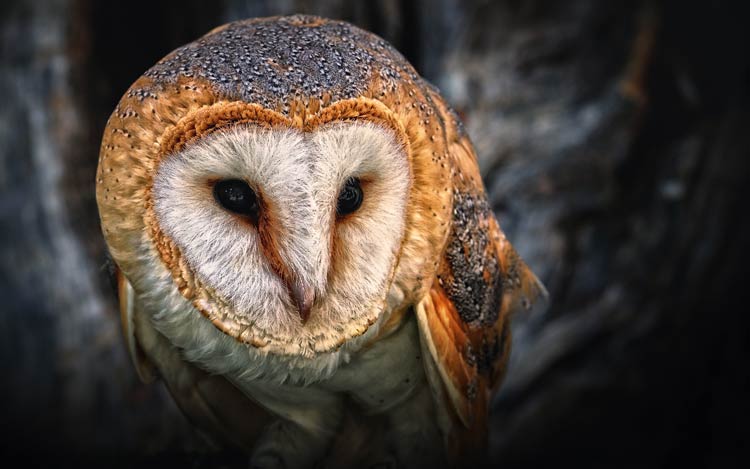
Predators and Threats
Owls are predators themselves, but they do face threats from other animals and human activities.
One of the main predators of owls are larger birds of prey, such as eagles, hawks, and other owl species. These predators may compete with owls for food and nesting sites, or may prey upon young or vulnerable owls.
Human activities are also a major threat to owls. Habitat loss and fragmentation due to deforestation, urbanization, and other development can disrupt owl populations and make it harder for them to find suitable nesting sites and prey. Pesticides and other chemical pollutants can also contaminate owl habitats and harm their health.
In addition, owls are sometimes hunted by humans for their feathers, which are used in traditional crafts and rituals. Illegal trade in owl species and parts is a major issue in some parts of the world.
Climate change is another growing threat to owl populations. As temperatures and weather patterns shift, the habitats and prey of owls may also change, making it harder for them to survive and thrive.
Overall, owls face a variety of threats from both natural and human causes, and conservation efforts are needed to protect these fascinating and important predators.
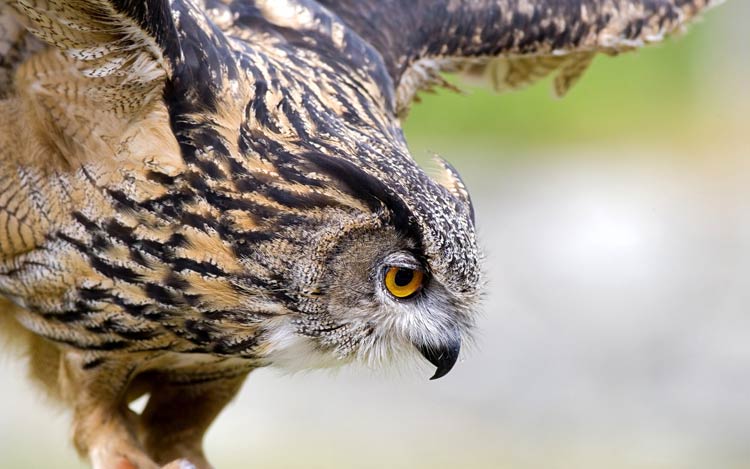
Interactions with humans
Owls have long held a place in human culture and mythology, and are often associated with wisdom, mystery, and magic. In many cultures, owls are seen as symbols of wisdom and are even revered as spiritual guides.
However, human interactions with owls have not always been positive. Historically, owls have been hunted for their feathers, meat, and other body parts, and have been persecuted as pests or threats to livestock. Some species, such as the barn owl, have suffered declines in population due to habitat loss and pesticide use.
Today, many people appreciate and admire owls, and efforts are underway to conserve and protect these fascinating birds. Conservation groups and researchers work to monitor owl populations, protect their habitats, and educate the public about the importance of these predators in their ecosystems.
In some places, owls are also used in falconry, a traditional hunting practice that involves training birds of prey to hunt for food. Owls used in falconry are typically captive-bred and well cared for, but there are concerns about the potential impact of this practice on wild owl populations.
Overall, human interactions with owls have been complex and varied, and continue to evolve as our understanding of these fascinating birds grows.

Population
the population of owls varies greatly by species and region. Some owl species are widespread and relatively common, while others are rare and endangered.
Most common
One of the most common owl species worldwide is the barn owl (Tyto alba), which is found on every continent except Antarctica. Barn owl populations are estimated to number in the millions, and they are generally considered to be of least concern in terms of conservation status.
Common
Other common owl species include the tawny owl (Strix aluco) of Europe, the eastern screech-owl (Megascops asio) of North America, and the southern boobook (Ninox boobook) of Australia and New Zealand. These species are also generally considered to be of least concern in terms of conservation status.
Rare
However, some owl species are much rarer and face significant threats to their populations. For example, the Madagascar red owl (Tyto soumagnei) is listed as endangered due to habitat loss and hunting, and the Philippine eagle-owl (Bubo philippensis) is also considered endangered due to habitat loss and fragmentation.
In addition, many owl species face ongoing threats from climate change, pollution, and other human activities. Conservation efforts are needed to protect these fascinating birds and ensure that they continue to play important roles in their ecosystems.

Some estimated population figures for a few owl species:
- Barn owl (Tyto alba): Population estimated in the millions worldwide
- Tawny owl (Strix aluco): Population estimated at several hundred thousand in Europe
- Eastern screech-owl (Megascops asio): Population estimated in the millions in North America
- Southern boobook (Ninox boobook): Population estimated in the thousands in Australia and New Zealand
- Madagascar red owl (Tyto soumagnei): Population estimated at fewer than 10,000 individuals
- Philippine eagle-owl (Bubo philippensis): Population estimated at fewer than 250 individuals
It’s important to note that population estimates can vary widely depending on the source and the methodology used, and some species may be more difficult to survey and monitor than others.
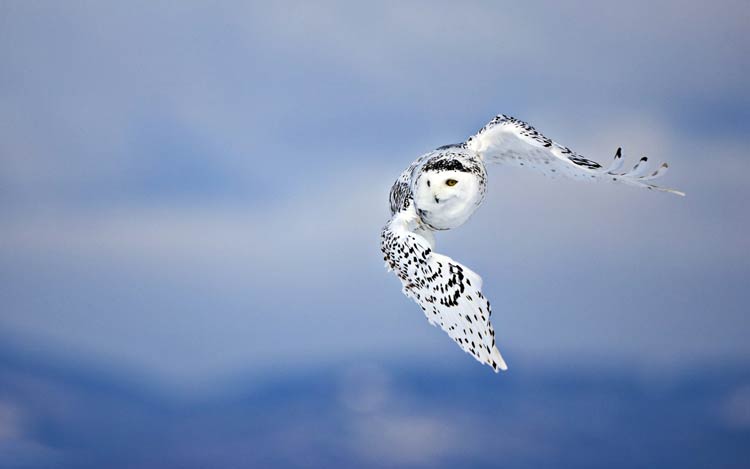
Status and conservation
Many owl species around the world are facing threats and challenges to their populations, particularly due to habitat loss, climate change, hunting, and other human activities. As a result, numerous owl species are considered to be at risk of extinction or have already been classified as endangered or critically endangered.
The International Union for Conservation of Nature (IUCN) Red List of Threatened Species is a comprehensive assessment of the conservation status of plants and animals around the world. According to the IUCN Red List, there are more than 70 owl species that are classified as threatened, including 14 that are considered critically endangered.
Some of the critically endangered owl species include the Madagascar red owl (Tyto soumagnei), the forest owlet (Heteroglaux blewitti) of India, and the Sokoke scops-owl (Otus ireneae) of Kenya and Tanzania.
Conservation efforts are underway to protect owl populations and their habitats, including habitat restoration and protection, hunting regulation, and captive breeding programs. In addition, research is ongoing to better understand the ecology and behavior of owls, which can help inform conservation strategies.
Overall, it is important to recognize the value of these fascinating birds and take steps to protect them and their habitats for future generations to enjoy.
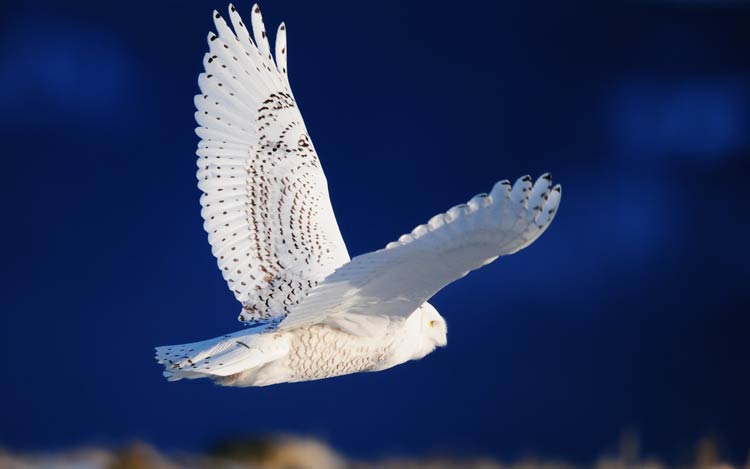
Owls in numbers
- There are around 250 known species of owls in the world.
- The smallest owl, the elf owl (Micrathene whitneyi), weighs as little as 40 g (1.4 oz) and measures 12.5 to 14.5 cm (4.9 to 5.7 in) in length and have a wingspan of about 27 cm (10.5 in)
- The largest owl species are the Eurasian eagle-owl (Bubo bubo) and Blakiston’s fish owl (Bubo blakistoni), with females reaching up to 75 cm (30 in) in length, over 200 cm (6 ft 7 in) wingspan, and a weight up to 4.6 kg (10.1 lb)
- Barn owls (Tyto alba) are one of the most widely distributed owl species, found on every continent except Antarctica.
- In North America, the great horned owl (Bubo virginianus) is one of the most common owl species, with a population estimated in the millions.
- The burrowing owl (Athene cunicularia) is the only owl species that nests underground, often in abandoned burrows of other animals.
- The mating call of male owls is often distinctive and species-specific. The call of the great horned owl, for example, is a deep, resonant “hoo-hoo-hoo-hoo” sound.
- Owls have been featured prominently in human cultures and folklore for centuries. In many cultures, they are considered symbols of wisdom, intelligence, and magic.
It’s important to note that specific population figures can be difficult to obtain and can vary widely depending on the species and the region. Conservation efforts are underway to protect owl populations and their habitats, but much work remains to be done to ensure the continued survival of these fascinating birds.
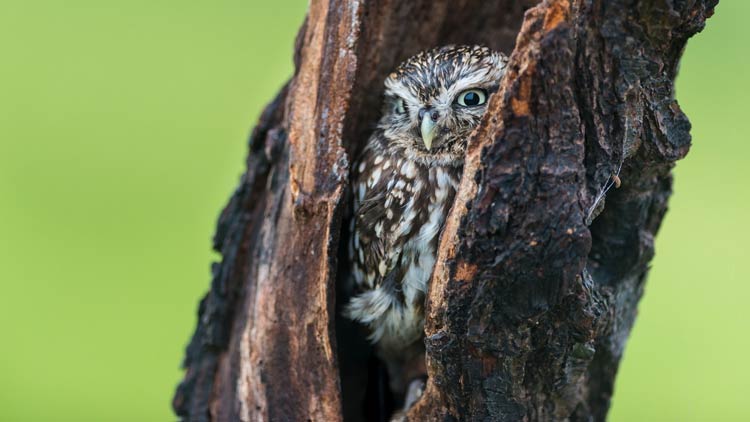
Owls in culture
Owls have been an important part of human culture and mythology for thousands of years, appearing in art, literature, and folklore from around the world. Here are some examples of how owls have been depicted in different cultures:
- Ancient Greece
The goddess Athena, who was associated with wisdom and knowledge, was often depicted with an owl as her companion. In fact, the little owl (Athene noctua) was named after her. - Native American culture
Many Native American tribes saw owls as symbols of wisdom, foresight, and protection. The Hopi people believed that burrowing owls could protect them from evil spirits, while the Apache associated owls with death and believed that the hooting of an owl could signal impending danger. - Japanese culture
In Japan, the owl is associated with good luck and fortune. The word for owl in Japanese, “fukurō,” is also a homophone for the word “fukuro,” which means “luck” or “prosperity.” Owls are often depicted in traditional Japanese art, such as woodblock prints and paintings. - Western culture
In Western culture, owls are often associated with wisdom, knowledge, and intelligence. They have appeared in literature and art for centuries, from William Shakespeare’s play “Macbeth” to the children’s book series “Harry Potter,” where the owl is used to deliver mail.
Owls have held a special place in human culture, often representing a sense of mystery and intelligence.
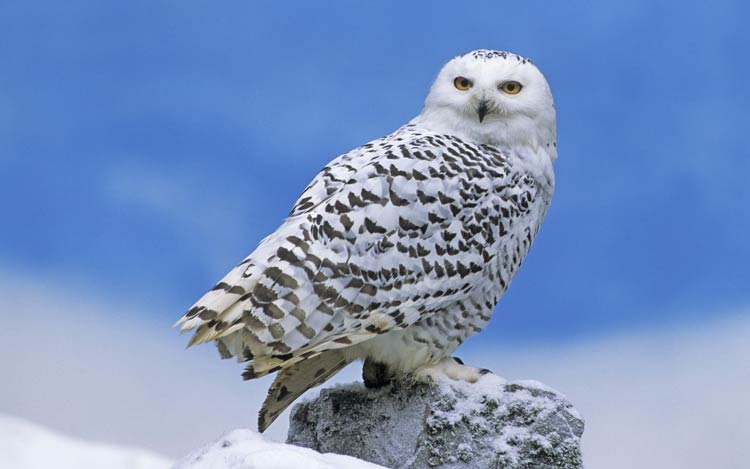
Owls in books
Owls have been a popular subject in literature, both in fiction and non-fiction works. Here are some examples of books that feature owls:
- “Wesley the Owl – the Remarkable Love Story of an Owl and His Girl” by Stacey O’Brien is a non-fiction book that tells the story of the author’s experience raising a barn owl named Wesley. The book details their unique bond and the challenges and joys of caring for a wild animal.
- “Hoot” by Carl Hiaasen is a young adult novel that follows a group of kids who try to save a group of endangered burrowing owls from being killed by a construction crew. The book explores themes of environmentalism and the power of youth activism.
- “The Guardians of Ga’Hoole” series by Kathryn Lasky is a popular children’s book series that follows a group of young owls on a quest to save their kingdom from evil forces. The series is known for its detailed descriptions of different owl species and their unique characteristics.
- “Owl Moon” by Jane Yolen is a children’s book that tells the story of a young girl and her father who go on a winter night-time walk in search of an owl. The book features beautiful illustrations and captures the magic of a snowy night in the woods.
- “The Owl Who Was Afraid of the Dark” by Jill Tomlinson is a children’s book that tells the story of a young barn owl who is afraid of the dark. The book explores themes of courage and overcoming fear.
These are just a few examples of the many books that feature owls. Owls have captured the imagination of authors and readers alike, and continue to be a popular subject in literature.
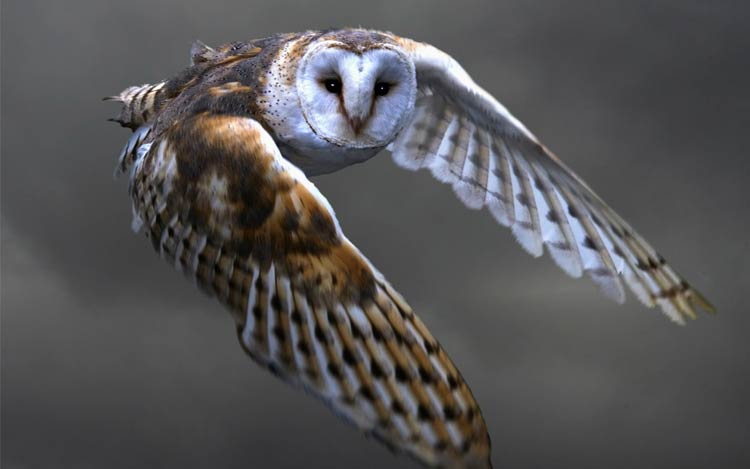
Owls in movies
Owls have also been popular in movies, both in live-action and animated forms. Here are some examples of popular movies that feature owls:
- “Legend of the Guardians: The Owls of Ga’Hoole” (2010) is an animated film that follows a group of young owls on a quest to save their kingdom from evil forces. The film features a variety of owl species, each with unique personalities and abilities.
- “Harry Potter” film series (2001-2011) features several owls, including Harry’s loyal companion Hedwig, who delivers his mail and helps him on his adventures.
- “Labyrinth” (1986) is a fantasy film that features an owl as a guide for the main character, Sarah, as she navigates a magical maze.
- “The Secret of NIMH” (1982) is an animated film that features a wise old owl named Nicodemus who helps the main character, Mrs. Brisby, on her quest to save her family.
- “The Jungle Book” (1967) features an owl named Archimedes who serves as a mentor to the main character, Mowgli, and teaches him important life lessons.
Overall, owls have played a variety of roles in movies, from wise mentors to loyal companions, and have captured the imaginations of audiences young and old.
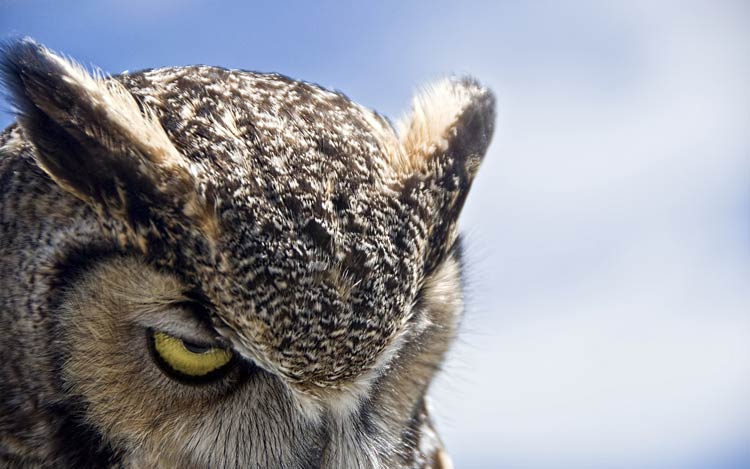
Interesting Facts about Owls
- Owls are almost completely silent in flight, thanks to the specialized feathers on their wings that break up the sound of air moving over their wings.
- Owls have three eyelids: one for blinking, one for sleeping, and one for keeping the eye clean and healthy.
- Some owl species can rotate their heads up to 270 degrees, thanks to their incredibly flexible necks.
- Owls have asymmetrical ears, with one ear placed higher than the other, which helps them locate the direction of sounds more precisely.
- Owls are apex predators, meaning they are at the top of the food chain and have no natural predators.
- The feathers on an owl’s face form a disk-like shape called a “facial disk,” which helps to funnel sound waves into the owl’s ears.
- Owls are found on every continent except Antarctica.
- Owls have specialized claws called talons, which are used to grip and kill prey.
- Owls can range in size from the tiny elf owl, which is only about 5 inches tall, to the great gray owl, which can reach up to 33 inches tall.
- Owls are nocturnal, meaning they are most active at night, and have adapted special adaptations for hunting in low light conditions, such as large pupils and a high number of light-sensitive cells in their eyes.
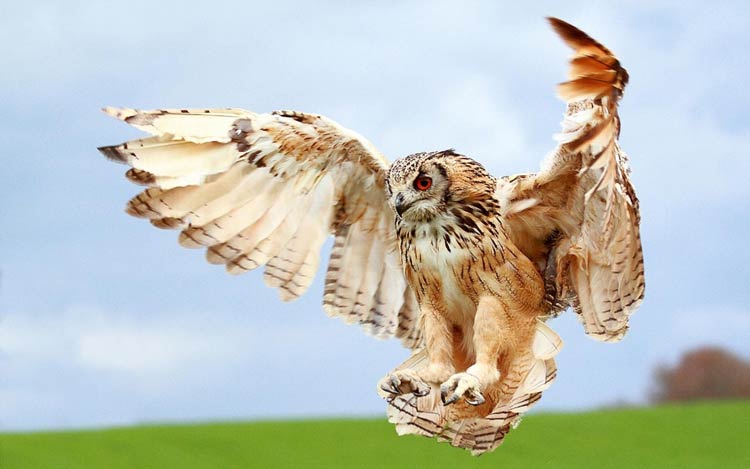
Q&A (questions and answers) about Owls
Q: What is the smallest owl?
A: The smallest owl is the elf owl (Micrathene whitneyi), which weighs as little as 31 g (1+3⁄32 oz) and measures some 13.5 cm (5+1⁄4 in).
Q: What is the largest owl?
A: The largest owls are the Eurasian eagle-owl (Bubo bubo) and Blakiston’s fish owl (Bubo blakistoni), which are similarly sized. The largest females of these species are 71 cm (28 in) long, have a 190 cm (75 in) wingspan, and weigh 4.2 kg (9+1⁄4 lb).
Q: How do owls hunt?
A: Owls hunt mainly at night, and use their excellent vision and hearing to locate prey. They use their talons to grip and kill prey, and their beaks to tear and swallow it.
Q: How many species of owls are there?
A: There are around 250 species of owls, belonging to the order Strigiformes.
Q: What is an owl’s lifespan?
A: The lifespan of an owl varies depending on the species, but on average, they can live up to 20 years in the wild and up to 30 years in captivity.
Q: Are owls endangered?
A: Some species of owls are endangered, primarily due to habitat loss and fragmentation, as well as persecution by humans.
Q: Do all owls hoot?
A: No, not all owls hoot. Some species, such as the barn owl, screech owl, and saw-whet owl, make other sounds, such as hisses, screams, and trills.
Q: Why are owls associated with wisdom?
A: Owls have long been associated with wisdom in many cultures, due to their large eyes and stoic appearance. They are also nocturnal creatures, which has led to the belief that they are able to see things that are hidden from others.
Q: Are owls social animals?
A: Most species of owls are solitary, but some, such as the snowy owl, may congregate in large groups during periods of food abundance.
Q: Where do owls nest?
A: Owls nest in a variety of places, including tree cavities, rock crevices, abandoned buildings, and even on the ground. Some species, such as the burrowing owl, dig their own burrows for nesting.











